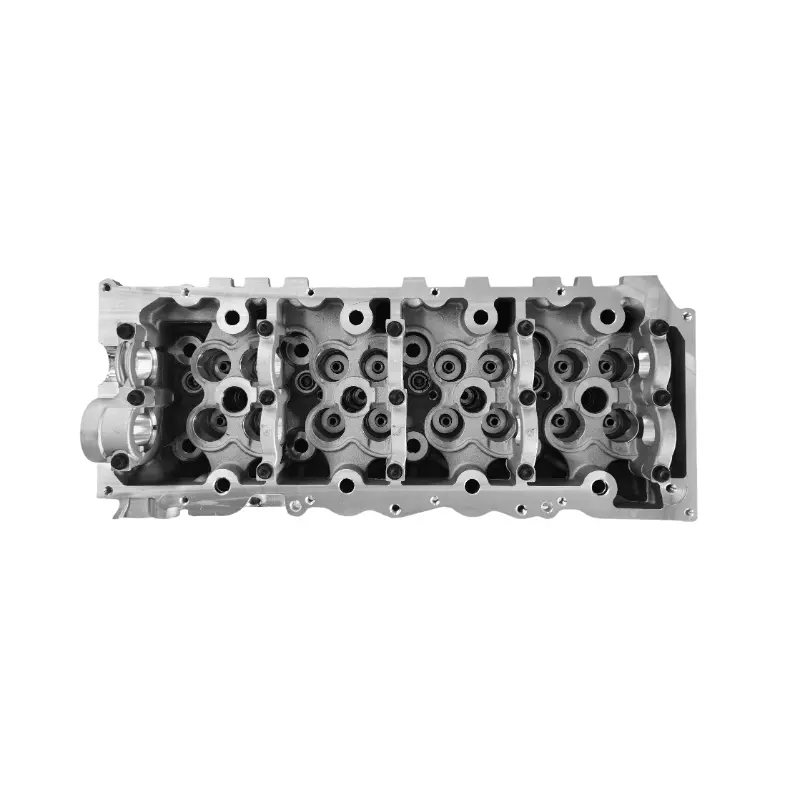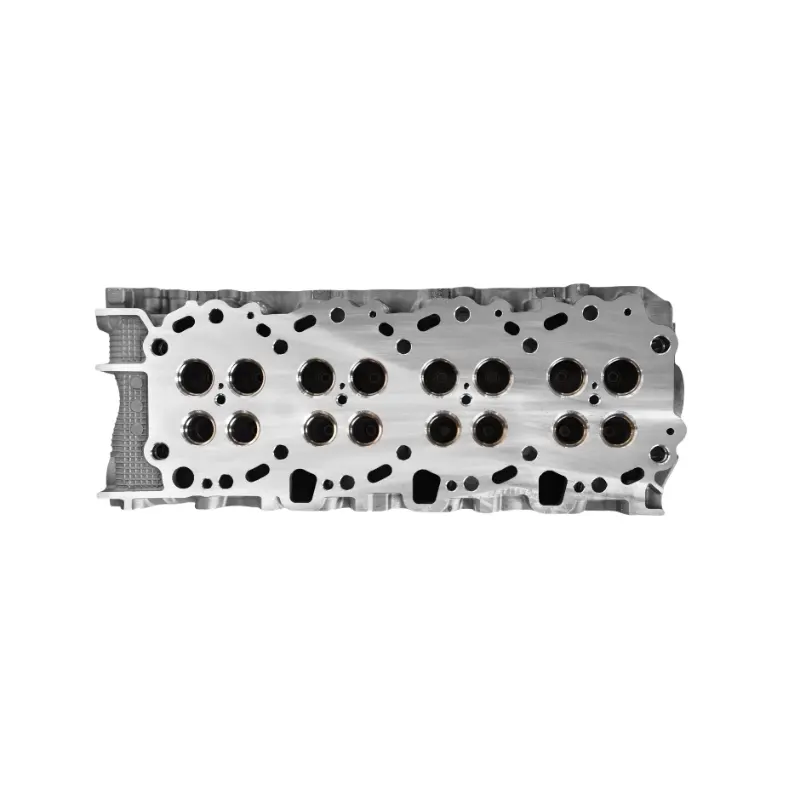Moteur applicable :
1KD-FTV / 2KD-FTV
Marque applicable :
TOYOTA
Voiture applicable :
HI LUX / LAND CRUISER / VIGO
Paramètres du produit :
| Déplacement | Carburant | Cylindre | Vallée | Arbre à cames | Année |
| 2.5TDI / 3.0TDI |
Diesel
|
4 | 16 | 2 | 2000- |
Culasse
| Déplacement | Carburant | Cylindre | Vallée | Arbre à cames | Année |
| 2.5TDI / 3.0TDI |
Diesel
|
4 | 16 | 2 | 2000- |
| ML N° | N° OEM | RÉF. N° |
| MLG047 | 1110130030 1110130031 1110130032 1110130050 1110130080 | 908783 |
| MLG048 | 1110130040 1110130041 1110130042 1110130060 1110130070 1110130071 111010C050 | 908784 |


| Moteur | 1KD‑FTV | 2KD‑FTV |
|---|---|---|
| Déplacement | 2 982 cc (3.0 L) | 2 494 cc (2.5 L) |
| Induction | VNT turbo, intercooler | Turbo (fixed or VNT, market‑dependent) |
| Train de soupapes | DOHC 16 valves, chain drive | DOHC 16 valves, belt drive |
| Système de carburant | High‑pressure common‑rail (D‑4D) | High‑pressure common‑rail (D‑4D) |
| Matériau de la tête | Cast aluminium alloy | Cast aluminium alloy |
| Émissions | Euro 3 – Euro 5 | Euro 2 – Euro 5 |
Heads are supplied bare, semi‑complete, or fully assembled (with valves, springs, camshafts & lifters). All units are CNC‑machined, pressure‑tested, and packed for export.
| Moteur | Main OEM P/N (casting families) |
|---|---|
| 1KD‑FTV | 11101‑30030, 11101‑30050, 11101‑0L060, 11101‑30080 |
| 2KD‑FTV | 11101‑30040, 11101‑30041, 11101‑30042, 11101‑30060, 11101‑30070/71, 11101‑0L050 |
(Casting shape and EGR port differ by market; confirm by VIN/engine code before ordering.)
| Moteur | Core Models (global production years) |
|---|---|
| 1KD‑FTV 3.0 L | Toyota Hilux (KUN26/36, 2005‑2015) – pickup & Vigo Revo Toyota Fortuner 3.0 D‑4D (2005‑2016) Toyota Land Cruiser Prado 120/150 (TRJ/KDJ120, 150, 2002‑2015) Toyota Hiace / Regius Ace 3.0 D‑4D (2004‑2019) Toyota 4Runner 3.0 D‑4D export trims |
| 2KD‑FTV 2.5 L | Toyota Hilux 2.5 D‑4D (KUN25/35, 2004‑2015) Toyota Innova 2.5 Diesel (TGN40, 2005‑2015) Toyota Fortuner 2.5 D‑4D (selected ASEAN markets) Toyota Hiace / Quantum 2.5 D‑4D (TRH/KDH200, 2004‑2019) Toyota Dyna 150 / ToyoAce 2.5 D‑4D (2001‑2011) |
| Step | Key Points |
|---|---|
| Preparation | Check deck flatness ≤ 0.05 mm; hot‑pressure‑test water jackets. |
| Gasket & Bolts | Always use a new MLS head gasket et new TTY head bolts. |
| Torque Sequence (typ.) | 39 N·m → 90° → 90° (cross pattern, centre‑out). |
| Timing Items | 1KD uses a long‑life chain but inspect guides; 2KD belt & tensioner should be renewed. |
| EGR / Port Match | Ensure correct EGR gallery (EURO 4/5 heads have additional passages). |
| Post‑start Checks | Bleed cooling system; verify rail pressure & VNT actuator function to avoid over‑boost. |
| Symptôme | Cause probable |
|---|---|
| Coolant loss / overheat | Crack between exhaust seat & coolant jacket or warped head |
| Hard cold‑start & white smoke | Cracked pre‑combustion bowl or low compression |
| Oil‑in‑coolant | Internal crack or gasket blow‑by |
| Power drop & rattling | Valve‑seat recession, cam journal wear, or VNT sticking |
(Applicable to 1KD-FTV / 2KD-FTV 2.5L & 3.0L D-4D Engines)
| Failure Mode | Symptoms | Causes | Repair/Prevention |
|---|---|---|---|
| Cracked Cylinder Head | – Coolant loss |
Laissez un message!
Laissez un message!